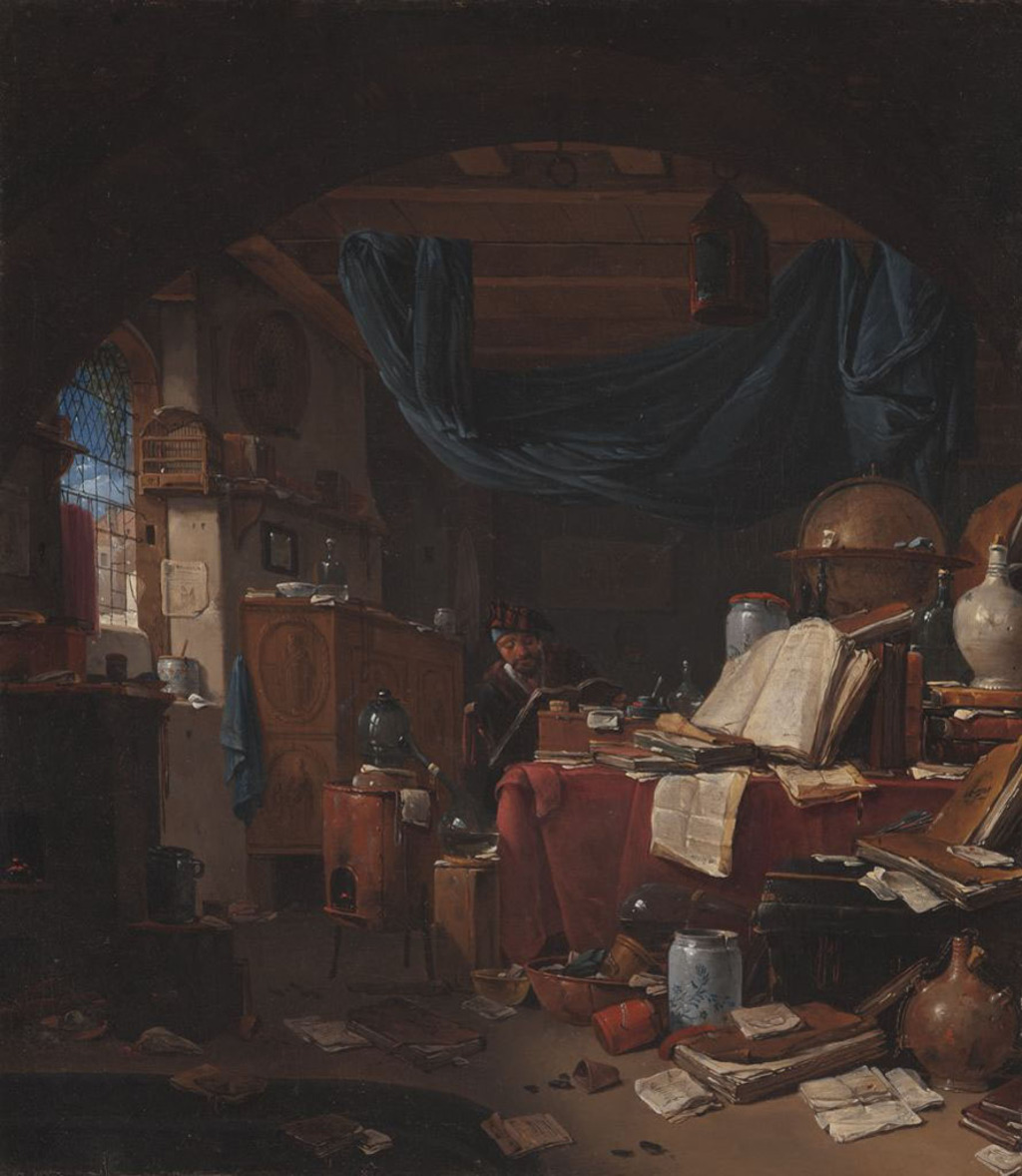Thomas Wyck, Dutch, 1616 - 1677
The Alchemist, mid 17th century
Oil on canvas
18 × 15 ¼ in. (45.7 × 38.7 cm)
Painting
Gift of Baroness Tamara de Kuffner de Lempicka
1967-31
Learn More
In the Medieval era, the practice of alchemy, an esoteric blend of philosophy, occultism, magic, and chemistry, flourished in northern Europe. Remembered today for their attempts to transform lead into gold, alchemists applied themselves to a wide range of medicinal and practical operations, often with the support of wealthy patrons. By the 17th century, however, more modern scientific methods took root, and alchemy was disparaged as a useless folly at best and a religious heresy at worst. At this time, the theme of the alchemist in his study became a popular subject of genre painting in the Netherlands. Thomas Wyck took up the motif numerous times over the course of his career, producing a number of canvases with similar elements: a leaded window, a birdcage, a drapery suspended from the rafters, and all manner of objects and papers piled around the figure. Wyck treats the subject primarily as a pretext for constructing an elaborate still life. He includes a number of unusual items specific to the practice of alchemy, such as the glass alembic perched atop a furnace and a Hessian crucible (the three-cornered vessel lying in the foreground beside the massive folio). The Dutch art market prized such masterfully realistic depictions of objects with widely differing textures and surfaces. Like most Netherlandish Baroque paintings, the image contains an element of moralizing. The chaos of the figure’s surroundings, his apparent impoverishment, and his isolation from society hint at the futility of the alchemist’s pursuit.

